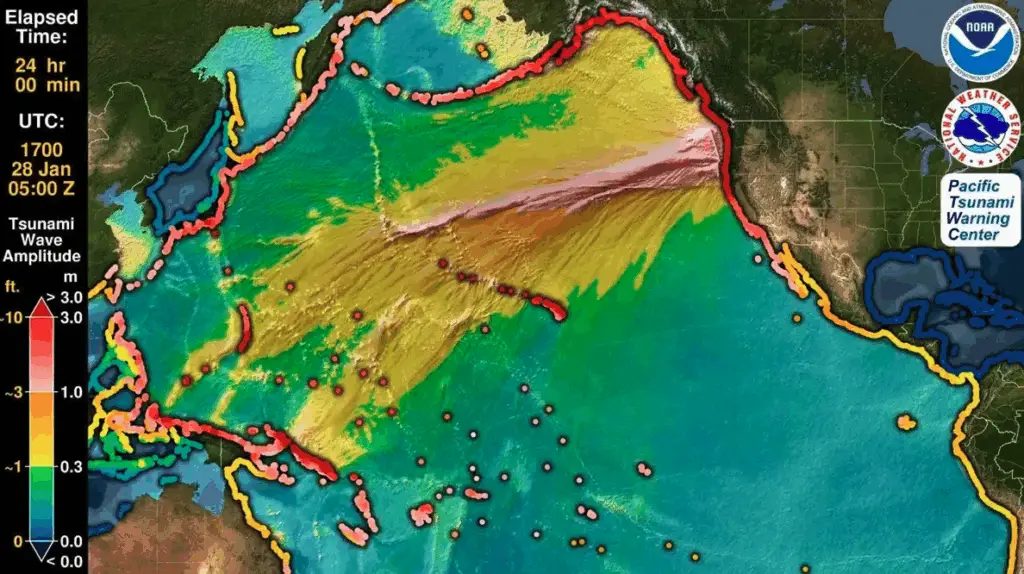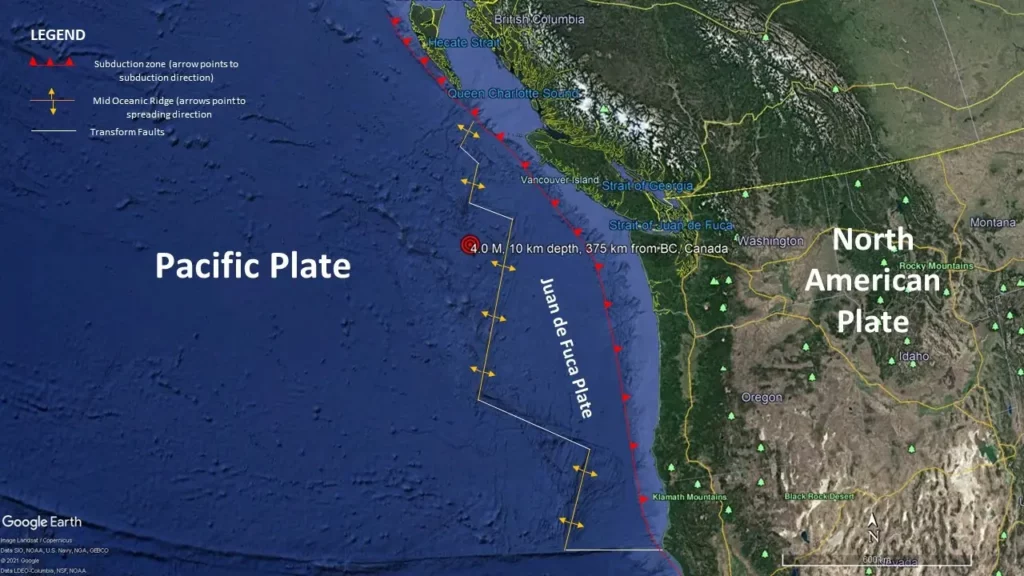A chilling new study from Virginia Tech reveals a looming threat to vast stretches of the US coastline: the potential for a catastrophic “mega tsunami” within the next five decades, triggered by a powerful, long-overdue earthquake. Experts warn that such an event could generate 1,000-foot waves, threatening to obliterate entire communities and forever reshape the landscape.
The alarming projections, published in the Proceedings of the National Academy of Sciences, center on the Cascadia subduction zone, a 600-mile fault line stretching from northern California to southern British Columbia. This seismic “ticking time bomb” has not ruptured with a significant earthquake in over 300 years, building immense pressure that scientists now say could unleash a magnitude 8.0 or greater tremor.
A Confluence of Catastrophe: Earthquake, Land Sinking, and Rising Seas
The study’s lead author, Tina Dura, assistant professor in Virginia Tech’s Department of Geosciences, paints a sobering picture. Beyond the immediate devastation of a massive earthquake, the research indicates that coastal land could suddenly sink by up to 6.5 feet. This “subsidence,” combined with the projected three-foot rise in sea levels by 2100 due to climate change, would dramatically expand coastal floodplains, intensifying the tsunami’s reach and impact.

“The expansion of the coastal floodplain following a Cascadia subduction zone earthquake has not been previously quantified, and the impacts to land use could significantly increase the timeline to recovery,” Dura stated, emphasizing the unprecedented scale of the potential disaster.
The chilling echoes of history stand as a stark reminder. The last mega-wave event in this region, in 1700, saw coastal lands sink, leaving behind eerie “ghost forests” along the Pacific Northwest coast – silent, skeletal witnesses to nature’s raw power. If a similar quake, comparable to the 1964 Great Alaska Earthquake (a colossal 9.2 magnitude event), were to strike today, the consequences would be dire. According to Dura’s analysis, an astounding “14,350 residents, 22,500 structures, and 777 miles of roadway would fall within the post-earthquake floodplain.”

A Call to Action: Prepare for the Unthinkable
The implications extend far beyond the immediate devastation. The study underscores a critical need for enhanced preparedness and resilient infrastructure in vulnerable regions. Alaska, Hawaii, and the entire West Coast are particularly at risk due to their proximity to unstable volcanoes, landslide-prone areas, and active earthquake zones.

“Preparing for these compound hazards can minimize long-term damage, ensure resilient communities, and protect critical coastal ecosystems from permanent degradation,” the research implores. “Our findings aim to support decision-makers and coastal residents in the Cascadia Subduction Zone—and globally—as they brace for the combined challenges of seismic activity and climate-driven changes.”
The warning is clear. While the exact timing of such a cataclysmic event remains unknown, the scientific consensus is growing: it’s not a matter of if, but when. The responsibility now falls to communities and governments to heed these urgent warnings and take proactive measures to mitigate the unthinkable. The lives, homes, and future of coastal communities hang in the balance, urging us to prepare with the utmost gravity for the seismic awakening that could redefine our coastlines.


